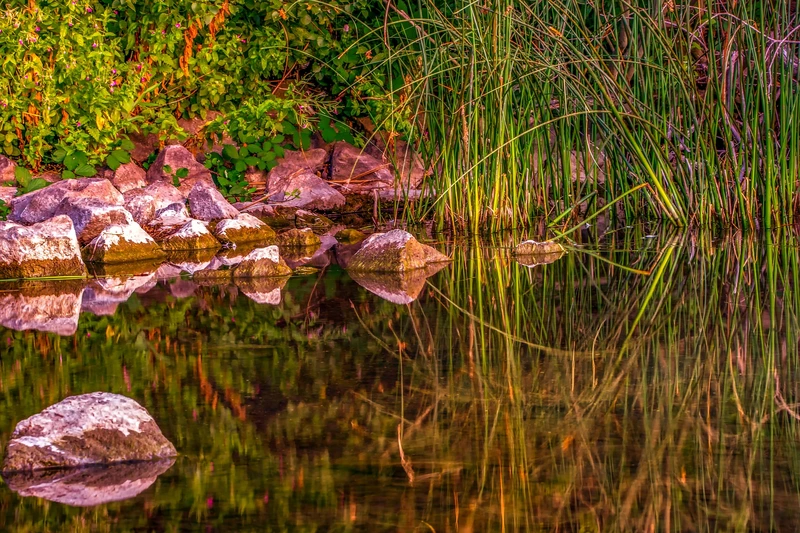
A pond is an excellent addition to your garden, providing interest, a haven for wildlife and the opportunity to grow different plants. If you're just starting your pond journey, we have some great tips for buying plants for your pond:
- Include different types of plants, marginal, oxygenating and floating
- Check the depth of water that the plant should grow in
- Choose plants that are suitable for the size of your pond, check they won’t grow too large or be too invasive
Marginal Plants
Marginal plants grow in shallow areas of the pond or the damp soil around the edge. There are many different sizes and textures of marginal plant available, this will allow you to create a beautiful display along the waters edge. Flowering marginal plants add even more interest and are attractive to insects, this is good for wildlife and pollinators. Aquatic wildlife, such as frogs and newts, will also use marginals for shelter and to lay their eggs. Marginals are normally supplied in aquatic baskets with aquatic compost, and they should remain in these, if they become too large they can be transplanted into a larger basket with fresh aquatic compost.
Oxygenating Plants
Oxygenating plants are vital for maintaining a healthy pond, producing oxygen and absorbing impurities to keep the water clear. They also help to limit algae growth in the pond by out-competing the algae for nutrients. As oxygenating plants are usually submerged, they provide cover for frogs and newts during the day, protecting them from predators. If your pond is large enough, it is good to have more than one type of oxygenator to maximise efficiency. If your oxygenating plants become too large, they can be thinned out be removing some during the spring months.
Floating Plants
The most popular floating plants are Waterlilies which are available in many varieties with flower colours including pink, white and yellow. They are best grown in still water, away from any waterfalls or water features. Waterlilies will provide better flowers when they have a good amount of sunlight. They are perennial plants meaning they will die back over winter and re-grow in spring, coming back year after year. Most Waterlilies are hardy and can be left in your pond over the winter months. It is best not to let the floating leaves cover more than half of the surface water of your pond.
As with garden plants, one of the most important things to consider when choosing pond plants is their mature size, it would be a shame to plant something that will quickly outgrow the space. If you have a small pond, there are dwarf varieties available that will be more suitable for you. It is also important to think about how vigorous your chosen plants are, one particularly vigorous specimen could quickly become dominant, smothering its neighbours.
During the spring and summer months, we stock a great range of pond plants and our friendly team of experts are always on hand to help and advise when you visit in-store.
